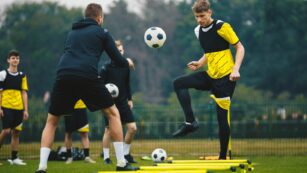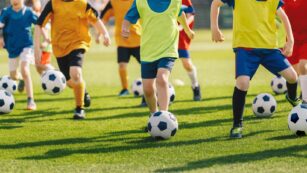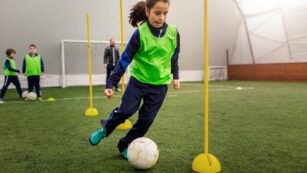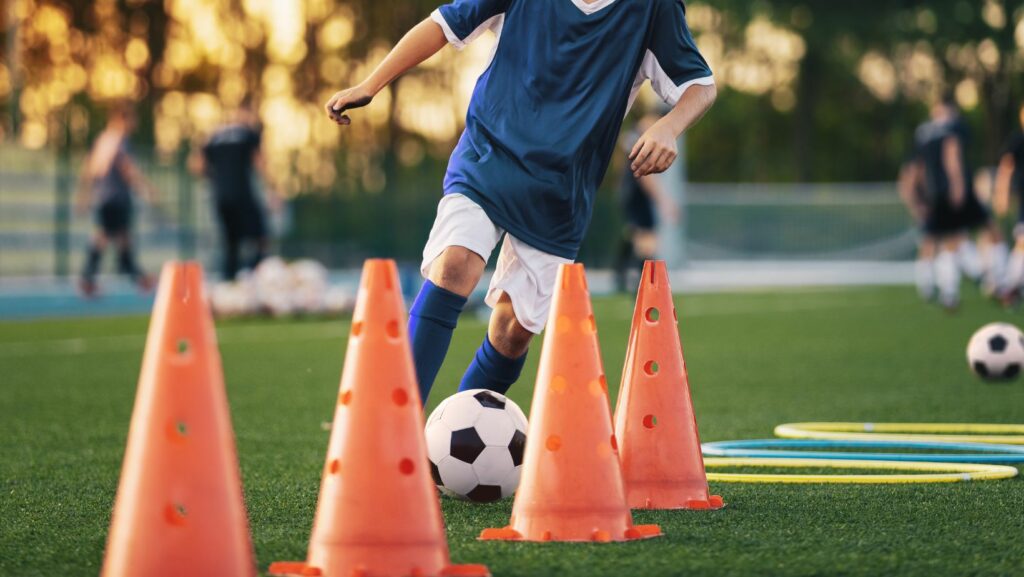Football is more than just a game; it’s a passion that unites fans and players alike. Whether on the pitch or cheering from the stands, everyone wants to elevate their skills and enjoy the thrill of the sport. Mastering the fundamentals is essential, but adding a few clever tips and tricks can take performance to the next level.
Football Tips and Tricks
Football players enhance their on-field performance by applying specific tips and mastering techniques. Key areas like fundamental skills and footwork significantly contribute to overall gameplay improvement.
Mastering Basic Techniques
 Mastering basic techniques forms the foundation for success in football. Players must focus on the following:
Mastering basic techniques forms the foundation for success in football. Players must focus on the following:
-
Dribbling: Use short, controlled touches while maintaining body balance. Practice changing direction quickly to evade defenders.
-
Passing: Aim for accuracy by keeping the head up, using the correct part of the foot, and following through in the direction of the target.
-
Shooting: Position the non-kicking foot beside the ball, strike with the laces for power, and follow through for accuracy and consistency.
-
Receiving: Cushion the ball upon receiving by using appropriate body parts, such as the foot or thigh, to create control and space for the next move.
-
Ladder Drills: Utilize an agility ladder to work on quick feet, coordination, and lateral movement. Implement variations, such as high knees and side shuffles, for comprehensive training.
-
Cone Exercises: Set up cones in various patterns to practice sharp turns, accelerations, and decelerations. These drills simulate in-game scenarios and improve spatial awareness.
-
Balance Training: Incorporate exercises like single-leg stands or stability ball workouts to build core strength and balance, essential for better footwork.
-
Foot Speed Drills: Perform quick, successive touches with the ball using both feet. Encourage rapid foot exchange while maintaining control to develop speed and ball handling.
Effective Training Drills
Training drills enhance performance and build essential football skills. Focusing on dribbling and passing accuracy can lead to significant improvements on the field.
Drills for Dribbling Skills
-
 Cone Weaving: Set up a series of cones in a zigzag pattern. Dribble the ball through the cones using quick, controlled touches. This drill improves agility and ball control.
Cone Weaving: Set up a series of cones in a zigzag pattern. Dribble the ball through the cones using quick, controlled touches. This drill improves agility and ball control. -
1v1 Dribbling: Pair up players to practice dribbling under pressure. One player attacks while the other defends. This exercise enhances both attacking and defensive skills.
-
Speed Ladder Drills: Use a speed ladder to perform various footwork patterns. Quick foot movements combined with ball control challenge coordination and enhance speed.
-
Shadow Dribbling: One player leads while another follows. The leading player performs different dribbling moves, and the follower mirrors them. This builds anticipation and responsiveness.
-
Wall Pass Drills: Kick the ball against a wall and retrieve it while practicing different dribbling techniques. This drill reinforces ball handling in confined spaces.
Game Strategies
Effective game strategies significantly enhance a player’s performance on the field. Understanding position play and fostering teamwork and communication are critical components of successful gameplay.
Understanding Position Play
 Understanding position play involves knowing one’s role and responsibilities on the field. Players should focus on the following aspects:
Understanding position play involves knowing one’s role and responsibilities on the field. Players should focus on the following aspects:
-
Positioning: Players should maintain proper spacing between themselves and their teammates to avoid congestion and allow for passing lanes.
-
Movement: Players should anticipate the ball’s movement and adjust their positioning accordingly, creating options for teammates.
-
Defensive Cover: Players need to understand when to apply pressure, drop back, or support. Effective positioning helps to cut passing lanes and force opponents into difficult situations.
-
Reading the Game: Players must develop the ability to assess the game dynamics, which includes recognizing patterns and adjusting positions to exploit weaknesses in the opponent’s formation.
Developing Teamwork and Communication
 Developing teamwork and communication promotes cohesion and enhances overall team performance. Players should implement these strategies:
Developing teamwork and communication promotes cohesion and enhances overall team performance. Players should implement these strategies:
-
Verbal Communication: Players should call for the ball, provide direction, and alert teammates of impending threats. Clear and concise communication fosters trust and responsiveness.
-
Non-Verbal Signals: Players can use hand signals or eye contact to convey intentions without verbal interruption, ensuring fluid movements and coordinated efforts.
-
Practice Together: Teams should engage in regular practice sessions to build familiarity. Joint training drills reinforce group dynamics and enhance mutual understanding.
-
Encouragement: Players should support one another through positive reinforcement, boosting morale and fostering a resilient team spirit.

